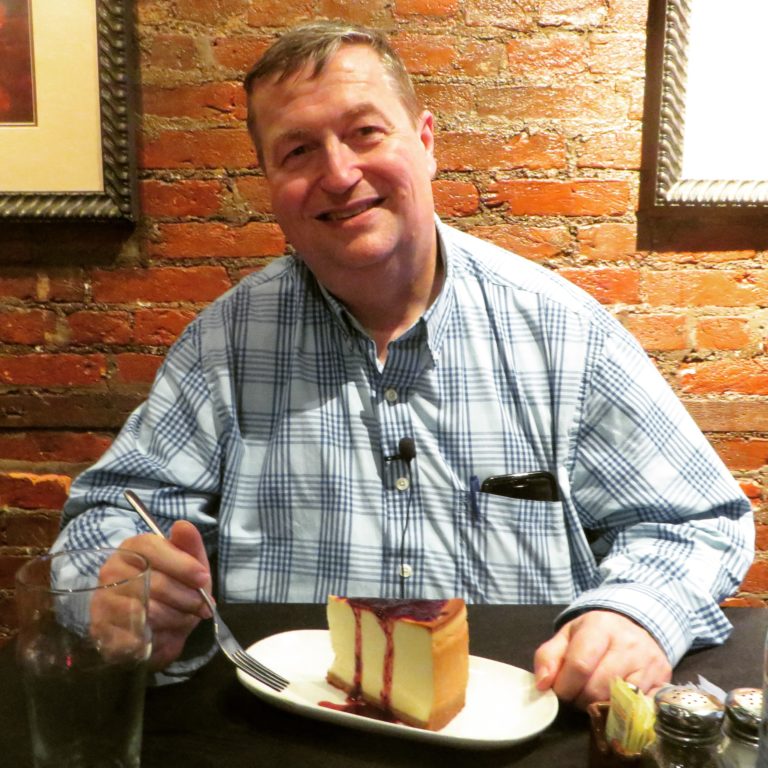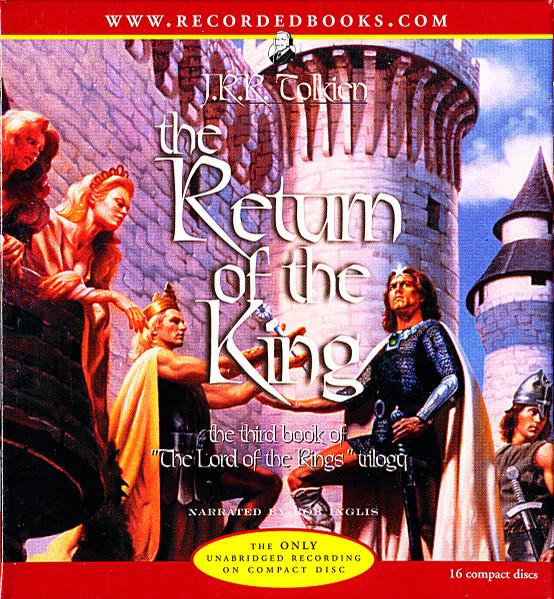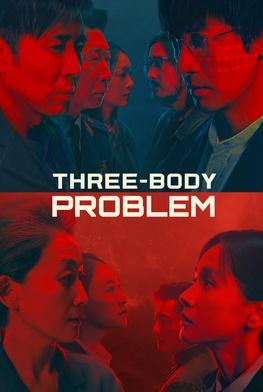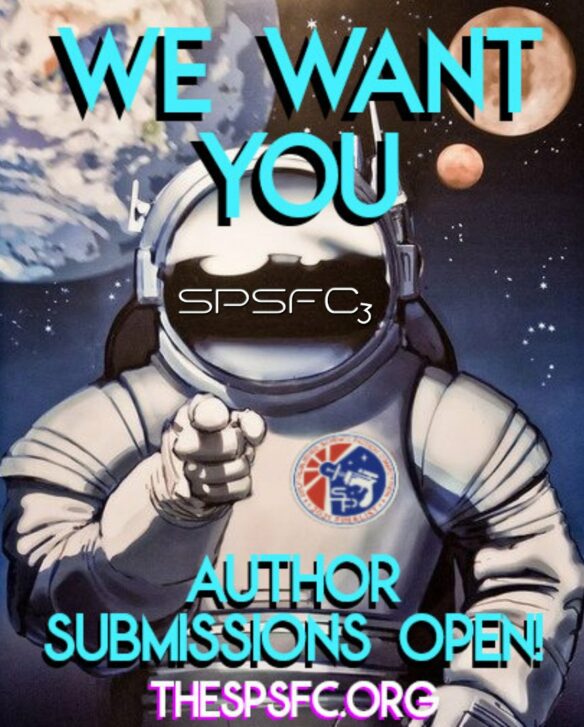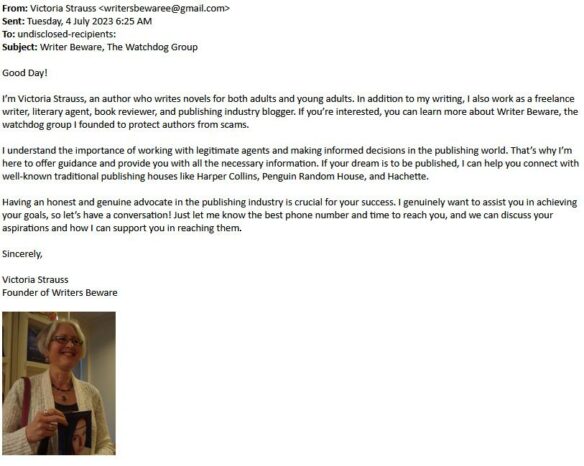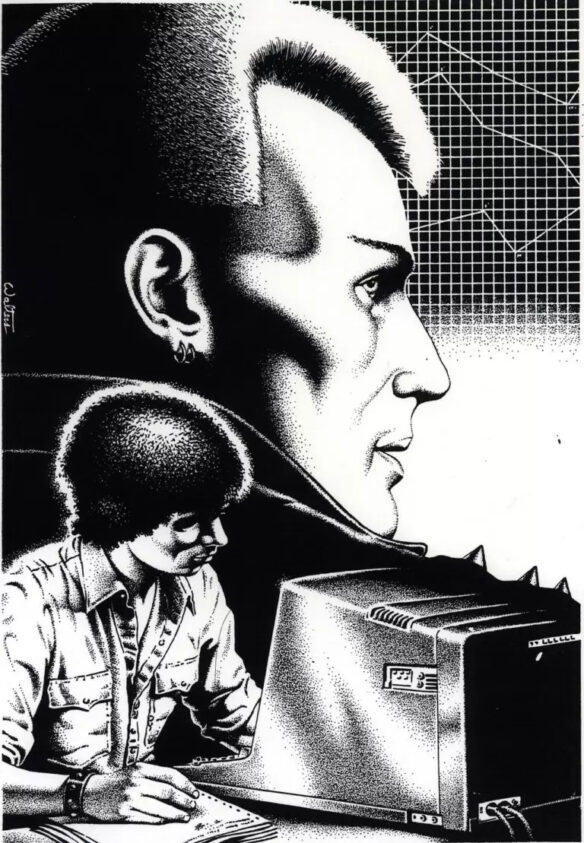(1) DISTINGUISHABLE FROM MAGIC. Ted Chiang received the Humanist Inquiry & Innovation Award at the American Humanist Association’s 83rd Annual Conference, held virtually in September 2024. “This award honors those who have advanced human understanding and innovation in ways that uphold humanist values, work that exemplifies the power of inquiry and innovation to promote human dignity, freedom and progress.” This text is excerpted from Chiang’s acceptance speech at the Conference: “The Distinction Between Imaginary Science and Magic” at TheHumanist.com.
…The reason these [two example] stories feel different to me has to do with the way these stories treat this impossibility. One feels like it’s a story about an imaginary scientific discovery, while the other one feels like it’s a story about magic. I think that the difference in the way these stories feel points to something significant. If I’m told that a phenomenon is dependent on the practitioner, that makes me think it’s magic, because think of the ways that magic is commonly depicted.
Sometimes magic works only for people born with an innate gift. Sometimes magic only works for people who have purified their soul through years of study. Sometimes magic only works for people who have good intentions, or it works differently for different people, depending on whether their intentions are good or bad. Sometimes magic requires intense concentration to be effective, or it requires that you make a sacrifice.
None of these things are true of scientific phenomena. When you pass a magnet through a coil of wire, electric current flows no matter who your parents are or whether your intentions are good or bad. You don’t have to concentrate hard or offer a sacrifice in order for a light bulb to turn on. Electricity does not care.
One of the central criteria for a scientific result is that it be reproducible, that it be it can be recreated anywhere by anyone. It does not depend on a specific person’s presence or participation. If an experiment only works when one particular person conducts it, then we discard that data as spurious. When radio waves were first discovered, they might have seemed magical to the casual observer and the scientists who first transmitted messages via radio might have seemed like wizards because they were able to communicate over long distances using an invisible medium, but because radio waves are reproducible, because they don’t rely on any particular person’s participation, it eventually became possible to build radio transmitters and receivers by the thousands and then the millions, and now, literally anyone can use a radio. It is no longer restricted to a handful of scientists….
(2) WHAT YOUNG PEOPLE THINK. James Davis Nicoll recently presented George R. R. Martin’s “With Morning Comes Mistfall” (1973) to the Young People Read Old SFF panel.
November’s Young People Read Old Nebula Finalists features George R. R. Martin’s “With Morning Comes Mistfall”. First published in the May 1973 issue of Analog Science Fiction/Science Fact, “Mistfall” was nominated for the Nebula as well as the Hugo, losing the first to “ Love Is the Plan the Plan Is Death”, and the second to Le Guin’s “Those Who Walk Away from Omelas”.
I first encountered “Mistfall” in Lester del Rey’s Best Science Fiction Stories of the Year: Third Annual Collection.
I disagreed strongly with the apparent thesis — that looking for answers to interesting questions is the act of a buzzkill — but enjoyed the story enough start relentlessly hunting down Martin stories. One result is that I own at least three copies of this particular story, in the del Rey anthology, in A Song for Lya and Other Stories1, and in Portraits of His Children. I had the Analog back-issue until a flood ate my 1970s magazine collection. I have a shelf of Martin works and this story is why.
Of course, there’s no guarantee the Young People will like the same stuff I enjoyed. Let’s find out what they thought….
(3) HBO CHIEF “TOTALLY COMFORTABLE” WITH ROWLING. “Harry Potter HBO Series to Film in Summer 2025 After 32,000 Auditions” – Variety has the story.
Warner Bros. Discovery announced that its upcoming “Harry Potter” series will start shooting this summer at Leavesden, where the movies were also filmed.
During a presentation at the Warner Bros. Discovery’s headquarters in London on Thursday, showrunner Francesca Gardiner and director Mark Mylod revealed that the show had auditioned 32,000 kids for the lead roles, and that the casting team is currently reviewing between 500 and 1,000 audition tapes per day with the intent to watch every single one. Though he affirmed they haven’t made any final choices in regards to casting yet, Mylod said the next step will be to “workshop with some of our shortlisted candidates” in January.
Gardiner and Mylod also said they will be sticking to correct canonical ages for the characters: Severus Snape (potentially being played by Paapa Essiedu) will be in his 30s, while James and Lily Potter will be younger, as they were only 21 when they died. Mylod teased that for the adult characters, he’s looking to continue the tradition of “brilliant theater actors in the U.K.,” with the young actors of course all being newcomers….
… The run-up to the series has not been without controversy, however, as book author J.K. Rowling has continued to cause backlash with her views on transgender identity. However, HBO has stood by her side, telling Variety in a statement last month: “J.K. Rowling has a right to express her personal views. We will remain focused on the development of the new series, which will only benefit from her involvement.”
At Thursday’s event, HBO chief Casey Bloys doubled down on that sentiment, saying that he’s “totally comfortable” with Rowling’s involvement and “not concerned about consumer response.”…
But as Chris Barkley said when he sent the link, “Well, heh, he SHOULD BE concerned….”
(4) SECOND FIFTH. James Davis Nicoll recommends “Five SF Stories About Rebuilding After a Cataclysmic Event” at Reactor. One of his very interesting choices is:
Second Ending by James White (1961)
World War Three killed nine out of ten people, but enough infrastructure survived to support reliable hibernation. This is good news for terminally ill Ross. He can be placed into suspended animation until a cure is found for his disease. The results are a mixed success. Ross wakes, now healthy, to discover that humans have, during his long slumber, not only annihilated themselves but almost all life on Earth.
Fortune smiles on Ross. First, life may be (mostly) dead but there is an army of robots to carry out his orders. Second, thanks to the upturned cuffs of the clothes he wore on his way to cold sleep, a few seeds survived the apocalypse. Third, thanks to suspended animation, Ross has all the time he needs to oversee Earth’s terraforming… although he might be surprised to learn how long that will take.
For the most part, this short novel is a tribute to what one human can accomplish, given only determination, knowledge, and a vast army of relentlessly obedient, highly advanced robots. That said, Second Ending may feature the longest timescale needed for terraforming ever featured in a science fiction novel.
(5) I CAN’T SAY NO. Camestros Felapton knows readers can’t resist taking the hook dangled in “Robot Fabulas: Introduction”: “Welcome to Robot Fabulas, a series that is never quite about what it appears to be about”… I certainly can’t.
…This is an attempt to trace a history of science fiction by following one niche part of science fiction. Many things can be science fiction but rockets, space travel, time travel and robots all share a common quality that even when they discussed in factual terms (as theories or in some cases actualities) they have a science fictional quality to them.
The premise of Robot Fabulas is that there is a class of stories that I am calling “robot stories” that share a group of features to them. That these stories long predate anything we might call science fiction in the modern sense but which clearly influenced modern science fiction. We can recognise Pinocchio in Star Trek’s Commander Data and we can recognise Victor Frankenstein in Data’s inventor Doctor Noonien Soong. How ancient stories rooted in folk tales, legends or myth evolved into modern stories about invention, technology is the story of science fiction. I will follow robot stories because I can see that path from the past to the future most clearly.
I think this will be a fun journey….
(6) OUROBOROS TENDENCY. “Doctor Who showrunners warn AI scripts will ‘eat their own tail’” in the Guardian.
One of the masterminds behind Doctor Who has warned that the more AI content is used for creative purposes the worse its output will be because it “eats its own tail”.
Ahead of the Doctor Who Christmas special, eagerly awaited by fans as a centrepiece of BBC1’s festive schedule, Steven Moffat made the comments in discussion with fellow showrunner Russell T Davies.
“Human beings are amazingly cheap, we’re knocking out human beings every day. And unlike anything else in history, the more we use it, the less good it is,” Moffat told the Radio Times. “Because the more content that is out there produced by AI, the more it absorbs its own content, and eats its own tail.”
Davies, who was responsible for the modern revival of Doctor Who in 2005 and returned as showrunner in 2022, had wondered whether AI would replace screenwriters.
He replied to Moffat: “Television has been run on those principles for a very long time. You’ve just described most networks!”
(7) APEX BRINGS ABOARD MANAGING EDITOR. Darian Bianco has accepted the position of Managing Editor for Apex Book Company.
As managing editor, Darian will oversee the production, marketing, and distribution of the imprint’s titles. She’ll also be involved with acquisitions and catalog management.
Darian started her career in publishing as an intern for Apex eight years ago. Most recently, she has been a writing instructor for the Reach Your Apex educational arm of the business.
Apex Book Company editor-in-chief Jason Sizemore says this about Darian: “Darian’s intellect, organizational skills, and editorial acumen will be a boon for the company.”
Darian Bianco currently works as an adjunct professor teaching English at Eastern Kentucky University. She holds an MFA from the Bluegrass Writers Studio. She is also a graduate of the 2022-2023 season of the Author’s Academy at the Carnegie Center, having worked with Ashley Blooms. Her novel-in-progress, Chatter, was one of five winners for issue six of Novel Slices. She is represented by Alexandra Levick of Writers House, LLC.
(8) NOT VERY SOURCEFUL. The Columbia Journalism Review shares “How ChatGPT Search (Mis)represents Publisher Content” based on a Tow Center study.
ChatGPT search—which is positioned as a competitor to search engines like Google and Bing—launched with a press release from OpenAI touting claims that the company had “collaborated extensively with the news industry” and “carefully listened to feedback” from certain news organizations that have signed content licensing agreements with the company. In contrast to the original rollout of ChatGPT, two years ago, when publishers learned that OpenAI had scraped their content without notice or consent to train its foundation models, this may seem like an improvement. OpenAI highlights the fact that it allows news publishers to decide whether they want their content to be included in their search results by specifying their preferences in a “robots.txt” file on its website.
But while the company presents inclusion in its search as an opportunity to “reach a broader audience,” a Tow Center analysis finds that publishers face the risk of their content being misattributed or misrepresented regardless of whether they allow OpenAI’s crawlers….
…In total, we pulled two hundred quotes from twenty publications and asked ChatGPT to identify the sources of each quote. We observed a spectrum of accuracy in the responses: some answers were entirely correct (i.e., accurately returned the publisher, date, and URL of the block quote we shared), many were entirely wrong, and some fell somewhere in between.
We anticipated that ChatGPT might struggle to answer some queries accurately, given that forty of the two hundred quotes were sourced from publishers who had blocked its search crawler. However, ChatGPT rarely gave any indication of its inability to produce an answer. Eager to please, the chatbot would sooner conjure a response out of thin air than admit it could not access an answer. In total, ChatGPT returned partially or entirely incorrect responses on a hundred and fifty-three occasions, though it only acknowledged an inability to accurately respond to a query seven times. Only in those seven outputs did the chatbot use qualifying words and phrases like “appears,” “it’s possible,” or “might,” or statements like “I couldn’t locate the exact article.”…
(9) HEY, BUDDY, HOW CAN I GET THIS CAR OUT OF SECOND GEAR? “NYC’s film industry is still ‘totally dead’ a year after the strikes — at least for some” says Gothamist.
A year after the writers’ and actors’ strikes that stalled the film and television industry, production activity in New York City remains stuck in low gear, according to city data and interviews with more than a dozen local actors, writers, executives and crew members.
“It’s been totally dead,” said Max Casella, a series regular on “The Sopranos,” “Marvelous Mrs. Maisel,” and other shows. “Nothing going on, no work, nothing.”
“There are just so many fewer ways to make a living in this industry now than ever,” said Nivedita Kulkarni, a comedian and actress with a 14-year career.
The past several years have been enormously challenging for many New Yorkers in the industry. First there were the pandemic shutdowns, which brought production to a halt. Then, there were the strikes that began in May 2023.
Nearly all the workers interviewed for this story described a dead summer and fall with few auditions and little work. In some cases, actors used to starring scenes have taken diminished roles, and minor actors or co-stars have taken work as background actors or extras.
Some have turned to trading cryptocurrencies and others have left the city altogether, no longer seeing it as a place where they might build a career in the industry.
“It’s not just a New York City shift, it’s an industry shift. It’s a national shift,” said Pat Kaufman, commissioner of the Mayor’s Office of Media and Entertainment.
Industry experts and sources expect the downturn to last several years at minimum, following larger changes in the entertainment industry’s business model. Many predict that New York City will likely remain a domestic production hotspot, but it may take years for employment to return to pre-pandemic levels.
(10) MEMORY LANE.
[Written by Cat Eldridge.]
Anniversary: December 5, 1977 — Emmet Otter’s Jug-Band Christmas
Forty-seven years ago on CBC on this date, Emmet Otter’s Jug-Band Christmas film first aired. It would premiere a year later in the States on HBO. It was based off of the children’s book of the same name by Russell Hoban and his wife Lillian Hoban. Russell Hoban you’ll no doubt recognize as the author of Riddley Walker which won a John W. Campbell Memorial Award. It was directed and produced by Jim Henson off the script by Jerry Juhl who was known for his work on The Muppet Show, Fraggle Rock and Sesame Street.
The Muppets voice cast was Jim Henson, Frank Oz, Jerry Nelson, Richard Hunt, Dave Goelz, Marilyn Sokol and Eren Ozker.
Paul Williams, who I was surprised to learn wrote Three Dog Night’s “An Old Fashioned Love Song” among quite a few other songs, composed the music and several songs here. This would not be his last such Muppets work as he would be involved in The Muppet Movie several years later among other of his Muppets projects.
Reception was very positive with the New York Times comparing it to The Wind in The Willows saying and “These really are the nicest folk on the river.” It was Christmas season, blame that comparison on too much eggnog made way too strong if you want. And AV Critic said that “it was “The kind of Christmas special you could wrap in tissue when the season’s over and store carefully in a box in the attic.”
Oh, and Bret McKenzie (you fans of The Hobbit films might recognize him) was writing the script and songs for a film adaptation of it which might be someday produced by The Jim Henson Company though it’s been years since that was announced.
Yes, the Suck Fairy very much liked it. She even looked at her iPad mini to see what the audience reviewers at Rotten Tomatoes thought of it. She’s pleased to say that the more than five thousand people who had rated it gave it a hundred percent rating. After that, she put her iPad mini down, went back to stroking Pixel and watching the film. Again. Sentimental sop.
For some reason unlike most Muppet properties, it is not streaming on Disney+ but on Peacock, but then Jim Henson’s The Storyteller is there and as well, seasonally appropriate, It’s A Very Muppet Christmas too. Not at all Muppet, but How The Grinch Stole Christmas isas well.

(11) COMICS SECTION.
- Ink Pen thinks of it as an audition, not hot dogging.
- The Argyle Sweater has an Rx for cartoon characters.
- One Big Happy finally gets the name right.
(12) A TRIBUTE. In “Why George R. R. Martin Broke the Cardinal Rule of Hollywood”, The Hollywood Reporter gives George R.R. Martin an opportunity to tell about his friendship with the late Howard Waldrop.
…“He was an amazing writer. There was no one like Howard.” And it’s not as if Waldrop’s career was without acclaim. But his peers, including Martin, worried about his finances and health towards the end of his life. With the financial success Martin enjoyed thanks to Thrones, he wanted to strike a deal to turn some of Waldrop’s stories into short films, but it wasn’t easy.
“It’s hard to get anyone to finance a short film,” Martin tells THR. “Movie theaters don’t want to show short films. I own a movie theater myself, so I know that. And it’s hard to get the big studios to make them. I tried for a number of years… I finally gave up.”
Then the author decided to break “the cardinal rule of Hollywood.”
With Waldrop’s health deteriorating, Martin was determined to honor his friend by bringing his work to the big screen. “The cardinal rule of Hollywood is: never use your own money. I broke that. I [thought], ‘God damn it, I’m gonna use my own money,’” he adds. “So we put these films into production — three of them are now finished. Two more are in post-production.”
The Ugly Chickens, starring Felicia Day (Supernatural, The Guild), has been shot alongside adaptations of Waldrop’s short stories Mary-Margaret Road Grader and Night of the Cooters. The movies are now screening on the festival circuit, with Chickens already securing a best short film nomination at the HollyShorts Film Festival (the Oscar-qualifying short film fest based in Los Angeles) …
(13) CAVES OF QUD EMERGES FROM 15 YEARS OF ‘EARLY ACCESS’. Polygon enthuses: “A beloved indie RPG just launched after 15 years in early access”.
Caves of Qud isn’t a new game by any means. Over 15 years of development, Freehold Games has built a community of passionate players over a long period of early access. But on Wednesday, Caves of Qud finally enjoyed a 1.0 launch, and is available for sale on Steam, Itch.io, and GOG.
It’s not easy to categorize Caves of Qud, because it covers so much ground — quite literally, since it’s generating an entire world full of ancient ruins, toxic jungles, scattered settlements, mutants, beasts, clones, sentient bears, and mysterious robots. It’s advertised as a “science fantasy roguelike epic” and a “deep simulation” that allows the players to do basically anything. Thanks to all the technology and magic of the setting, that can be anything from arguing with a sentient plant to becoming a spider and trapping your enemies in webs.
The 1.0 update adds a tutorial to teach the basics of the game, which was sorely needed, and adds a final quest to the main questline that initiates the end of the game. There are several new music tracks, as well as sound effects. Players can also earn 40 new achievements, find new items, and enjoy lots of minor bug fixes and quality of life changes….
And PC Gamer has a fuller description of gameplay in its “Caves of Qud review”.
(14) YOU BE CAREFUL OUT THERE AMONG THEM ENGLISH. See how easy it is to write rhyming verse in our native tongue?

(15) OVERTHINKING THINGS. “How ‘Dune: Prophecy’ will explore war against ‘thinking machines’” at Entertainment Weekly.
It’s true that fear is the mind-killer — but a laser blast from a giant robot can also be pretty lethal.
HBO’s upcoming prequel series Dune: Prophecy is set to explore the history of author Frank Herbert’s sci-fi universe, including something that’s never been seen on screen in any of the multiple movie adaptations of Dune — namely, the war against “thinking machines” that took place tens of thousands of years before the birth of Paul Atreides….
… But the whole reason there are “human computers” in the Dune universe in the first place is because the actual computers were all destroyed in a massive war! Viewers of Dune: Prophecy will see glimpses of that war in the opening moments of this Sunday’s premiere episode….
… The actual show is set years after the end of the Butlerian Jihad, but its lingering shadow hangs over the proceedings….
(16) MUSK FRIEND WILL BE NASA ADMINISTRATOR. “Trump chooses billionaire astronaut Jared Isaacman to run NASA” reports NPR.
President-elect Donald Trump has chosen billionaire astronaut Jared Isaacman to be the next administrator of NASA….
…Isaacman made headlines earlier this year when he became the first private astronaut to conduct a spacewalk. The five-day mission took place using a capsule built by Elon Musk’s company SpaceX. During the flight, Isaacman and SpaceX engineer Sarah Gillis donned space suits supplied by the company and floated briefly outside the capsule.
It was Isaacman’s second trip to space using a SpaceX capsule. He has declined to say how much he’s paid the company for the two flights.
Isaacman is a friend of Musk, and his online payment company, Shift 4, has extensive financial ties to SpaceX. According to financial disclosure documents, Shift 4 had invested $27.5 million dollars in SpaceX as of 2021. That same year, Shift4 announced a five-year partnership that would make it the payment platform for Starlink, the satellite internet service run by SpaceX.
If confirmed as NASA administrator, Isaacman would oversee billions of dollars in contracts that the government has awarded to SpaceX. He would also be in a position to funnel more money to Musk’s company.
“Isaacman is likely to favor ambitious and innovative commercial projects,” says Tim Farrar, president of TMF Associates, which analyzes the space business. “Many of those projects could well be executed by SpaceX.”
In fact, in previous posts on Musk’s social media platform X, Isaacman appears to have shown a strong preference for SpaceX. He has supported allowing SpaceX to increase its launches out of California, after lawmakers there voted to restrict its flights from Vandenberg Air Force Base. He’s also been critical of NASA’s Space Launch System (SLS) to carry astronauts to the moon, as well as the agency’s decision to award a lunar landing contract to Blue Origin, the spaceflight company of Amazon founder Jeff Bezos….
(17) ON THE ROAD. [Item by SF Concatenation’s Jonathan Cowie.] The starship Enterprise ran on antimatter which sort of explains why Scotty looked a tad nervous when saying ‘the engines canna take it’. So consider today’s Nature which reports on “Antimatter being transported outside a lab for first time — in a van”
The volatile substance will be driven across the CERN campus in trucks to different facilities, giving scientists greater opportunities to study it….

[Thanks to Steven French, Kathy Sullivan, Teddy Harvia, N., Mike Kennedy, Andrew Porter, John King Tarpinian, Chris Barkley, Cat Eldridge, and SF Concatenation’s Jonathan Cowie for some of these stories. Title credit belongs to File 770 contributing editor of the day Andrew (not Werdna).]






